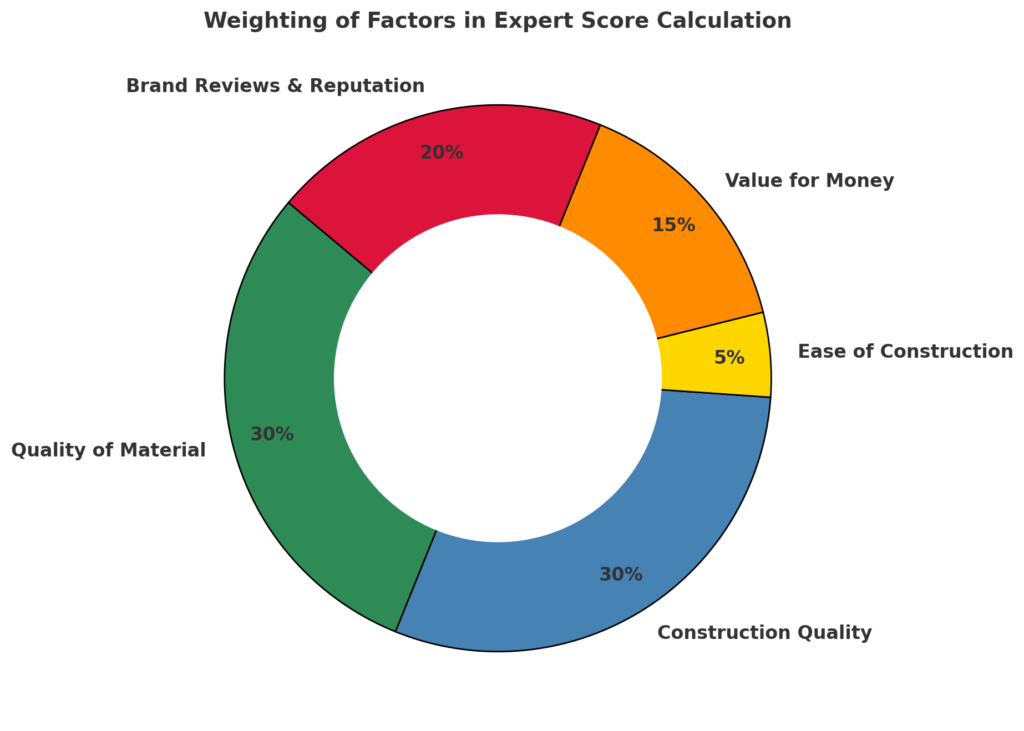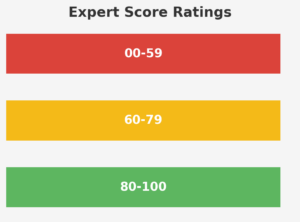The Expert Score
The Expert Score is a 0-100 score that indicates how good a garden building is according to industry experts.

How the Expert Score is calculated
The Expert Score is an industry-leading ranking system designed to provide an unbiased, data-driven assessment of garden buildings. Developed in collaboration with experienced garden building specialists, it systematically evaluates a wide range of product attributes to deliver a fair and objective measure of quality. Unlike many generic “Top 10” lists that rely on opinion or affiliate placements, the Expert Score is built on structured analysis, real-world testing insights, and expert validation—ensuring you get a rating you can trust.
By following this process we are able to process and rank every garden building sold in the UK and show you what industry experts agree are the best and explain why they think they are the best.
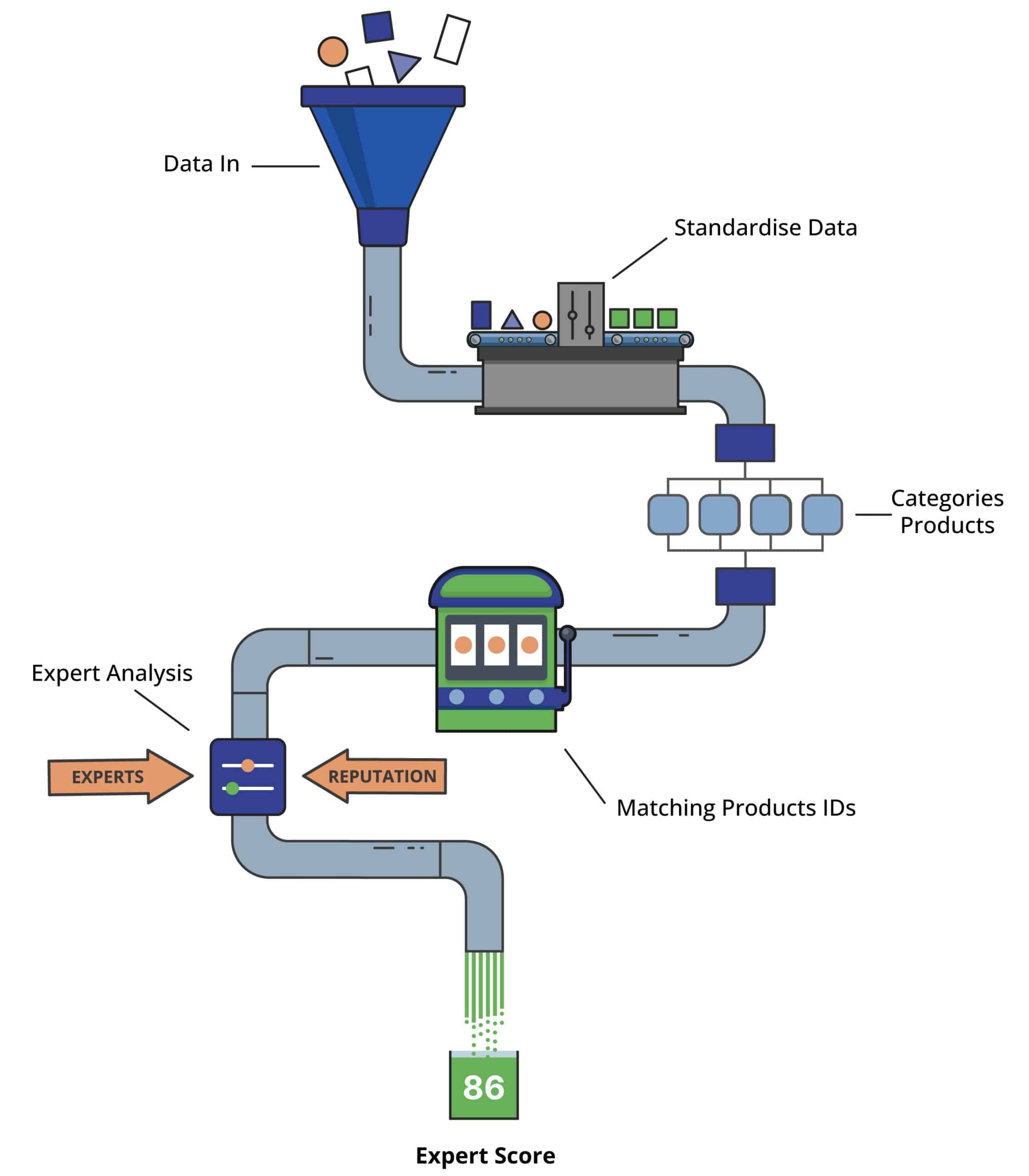
1) Intelligent Data Collection
The process begins with data intake from multiple sources, ensuring broad coverage of available products. Raw information is gathered at scale, often exceeding a million individual listings. This dataset is then refined to focus exclusively on garden buildings, filtering out irrelevant entries.
2) Standardisation & Structuring
With such a diverse dataset, product attributes must be normalised to enable fair comparisons. Variations in terminology and measurement units are harmonised, allowing products to be evaluated on a like-for-like basis. This ensures that core aspects—such as materials, dimensions, and key features—are accurately represented across all entries.
3) Advanced Categorisation
Once the data is structured, products are intelligently assigned to relevant categories. While keyword detection plays a role, deeper analysis is employed to recognise more nuanced classification factors. Elements like structure type, additional features, and unique attributes are assessed to ensure each product is positioned correctly within its category.
4) Data Consolidation & Product Matching
Products are often listed across multiple sources with variations in descriptions, specifications, and pricing. A sophisticated matching process consolidates these entries, identifying identical products and merging their attributes. By ranking data sources based on reliability and accuracy, the most relevant details are prioritised, enabling accurate comparisons and price tracking.
5) Expert-Led Evaluation
A key differentiator of the Expert Score is the integration of specialist insights. Experienced industry professionals have helped shape the evaluation criteria, identifying the attributes that truly impact quality and longevity. Their expertise influences the weighting of various factors, allowing the system to go beyond raw data and reflect real-world performance expectations.
6) Final Score Calculation
Once all factors are accounted for, the Expert Score is generated, ranking products within their categories. This score is the culmination of extensive data processing, expert input, and comparative analysis—allowing consumers to quickly identify the highest-rated garden buildings based on both industry standards and practical considerations.
By following this structured yet adaptable approach, we ensure that every garden building is assessed fairly, offering a transparent yet sophisticated ranking system to guide purchasing decisions.
How do our Experts rate things?
We can’t reveal all our secrets, but we can share some insights into how our experts determine what makes a garden building stand out. Our aim is to provide a fair, impartial, and data-driven ranking system, helping you find the best products available.
At the heart of this process is an extensive evaluation of over 10,000 garden buildings, covering hundreds of product attributes from more than 25 leading UK retailers. The first step is ensuring that every product is assessed on an equal footing. To achieve this, we gather and structure vast amounts of product data—often processing over 1 million data points—ensuring consistency across key attributes.
From here, we work closely with industry specialists with decades of experience to define the critical factors that determine quality, durability, and value for money. These experts use their deep knowledge to identify which features truly matter in each category. While some aspects are straightforward—such as materials and construction techniques—others require a more nuanced understanding of how certain design choices impact long-term performance.
Every product is then assessed across a structured framework covering more than 35 core evaluation criteria. This allows us to apply over 280 standardised data points per product, ensuring an objective comparison. Products that excel in critical areas receive stronger rankings, while those that fall short are identified accordingly. By combining structured data processing with expert-driven insights, we ensure that each ranking reflects real-world quality and buyer expectations.
The result? A powerful scoring system that continuously adapts to market trends and expert knowledge, ensuring that when you browse our rankings, you’re seeing the best of the best—backed by data and industry validation.
The final calculation
The 0-100 Expert Score is finally calculated by weighting the quality of material, construction quality, ease of construction and value for money scores with the Brands online review and reputation score.
The colour of the Expert Score depends on its rating: If it’s poor it gets a score of 00-59: Red. If it’s average it gets a score of 60-79: Yellow. If it’s great it gets a score of 80-100: Green
Expert Score distributions
80% of all garden buildings have an Expert Score between 74 and 90 with an average of 83. Garden Buildings with an Expert Score above 83 are better rated than the average. Below is illustrated the distribution of the Expert Score in percentages.
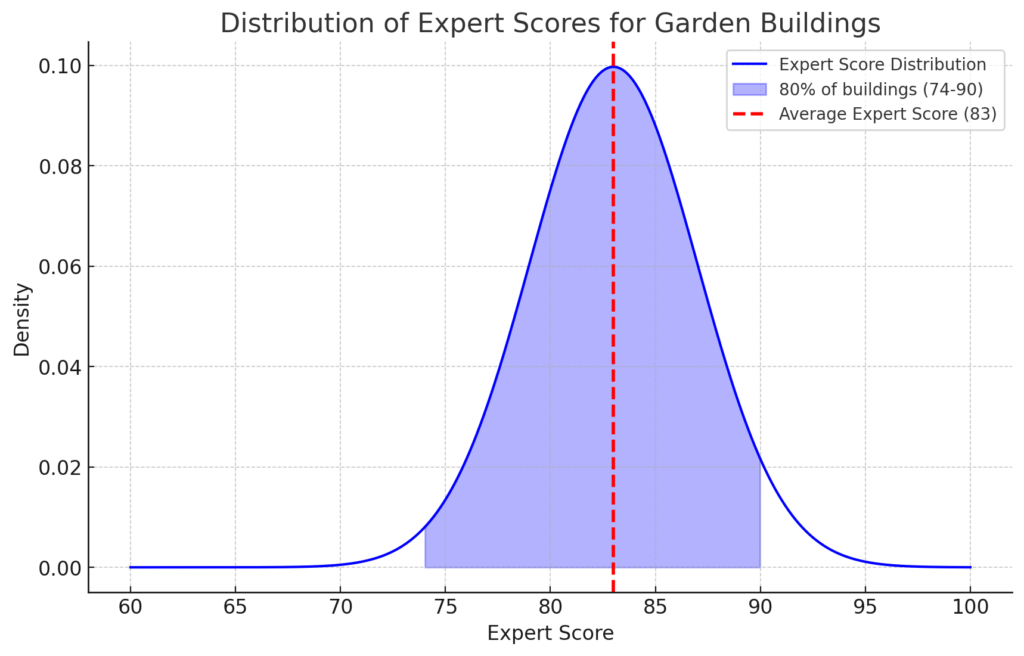
Quality of material distributions
73% of all garden buildings have a quality of material score between 78 and 90 with an average of 81. Garden Buildings with a quality of material score above 81 are better rated than the average. Below is illustrated the distribution of the quality of material score in percentages.
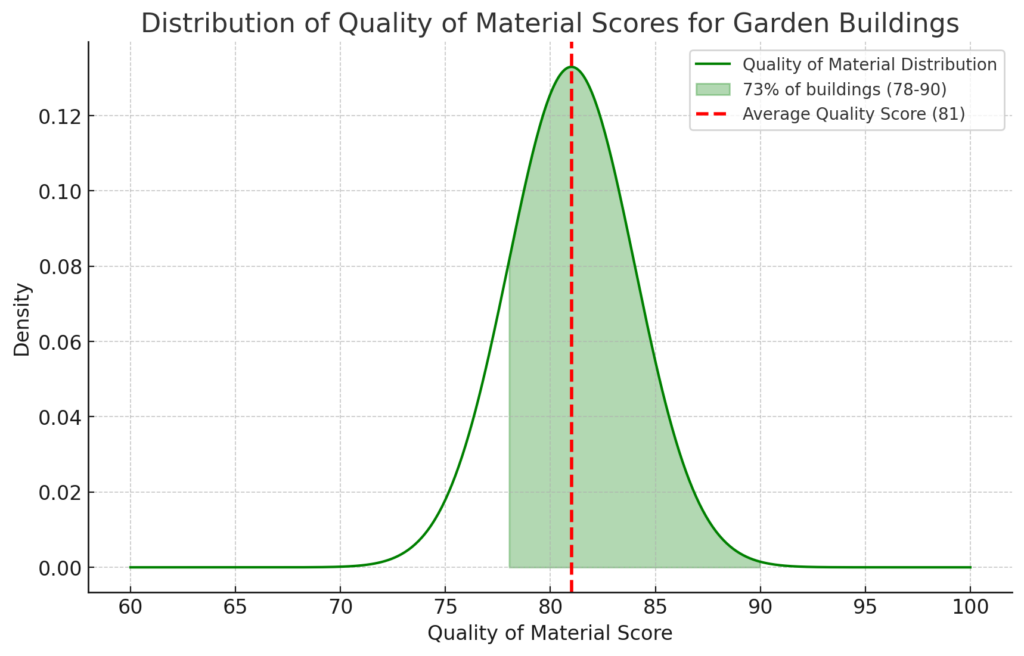
Construction quality distributions
84% of all garden buildings have a construction quality score between 74 and 88 with an average of 77. Garden Buildings with a construction quality score above 77 are better rated than the average. Below is illustrated the distribution of the construction quality score in percentages.
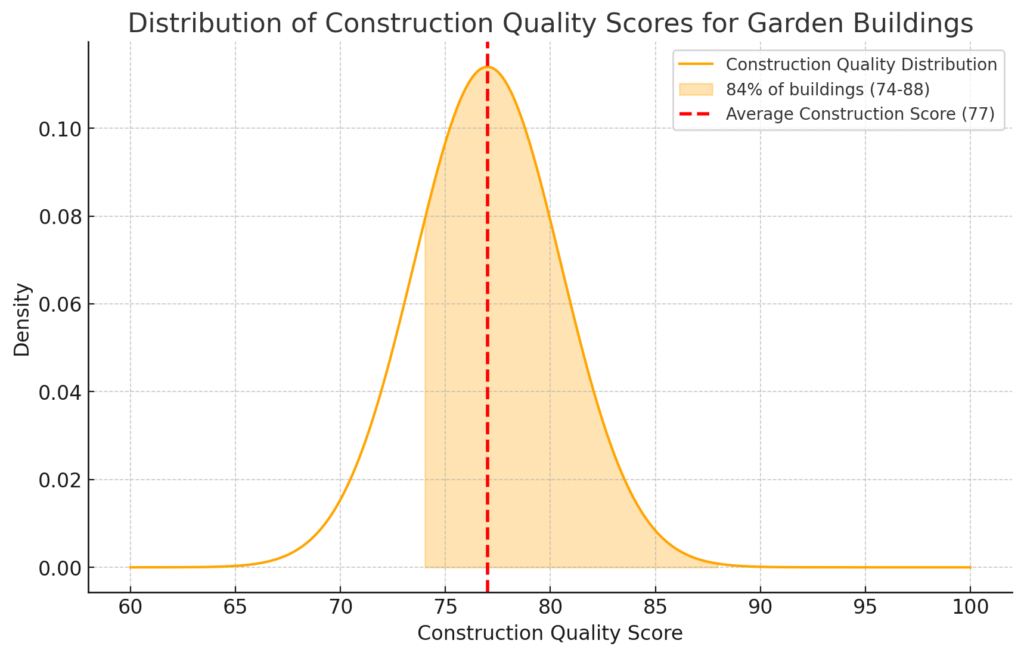
Ease of construction distributions
60% of all garden buildings have ease of construction scores between 62 and 92 with an average of 73. Garden Buildings with ease of construction score above 73 are better rated than the average. Below is illustrated the distribution of the ease of construction score in percentages.
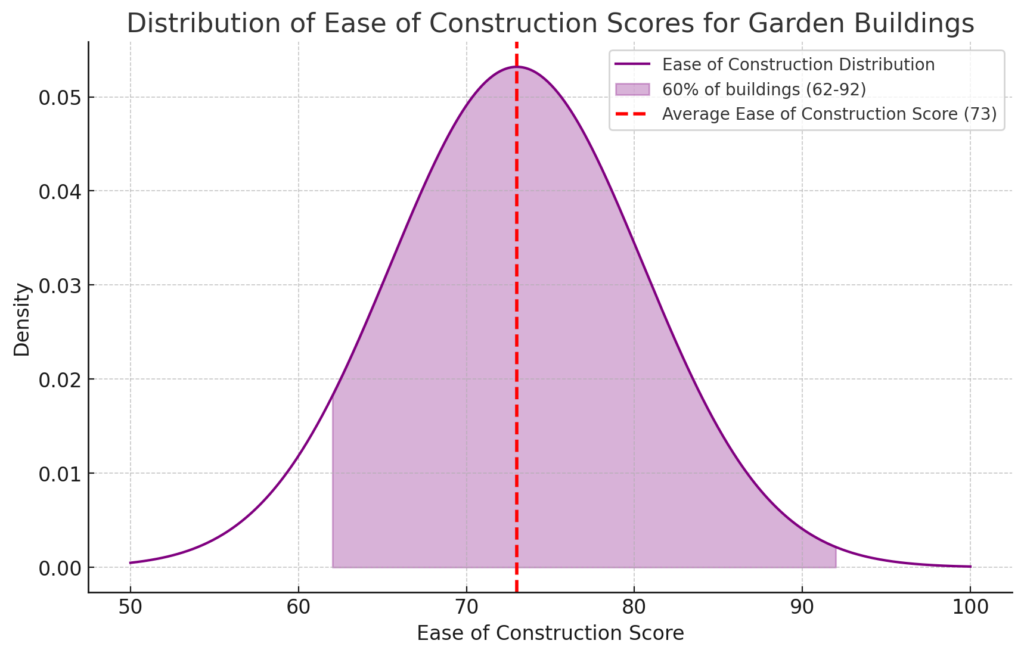
Value for money distributions
55% of all garden buildings have a value for money score between 74 and 94 with an average of 79. Garden Buildings with a value for money score above 79 are better rated than the average. Below is illustrated the distribution of the value for money score in percentages.
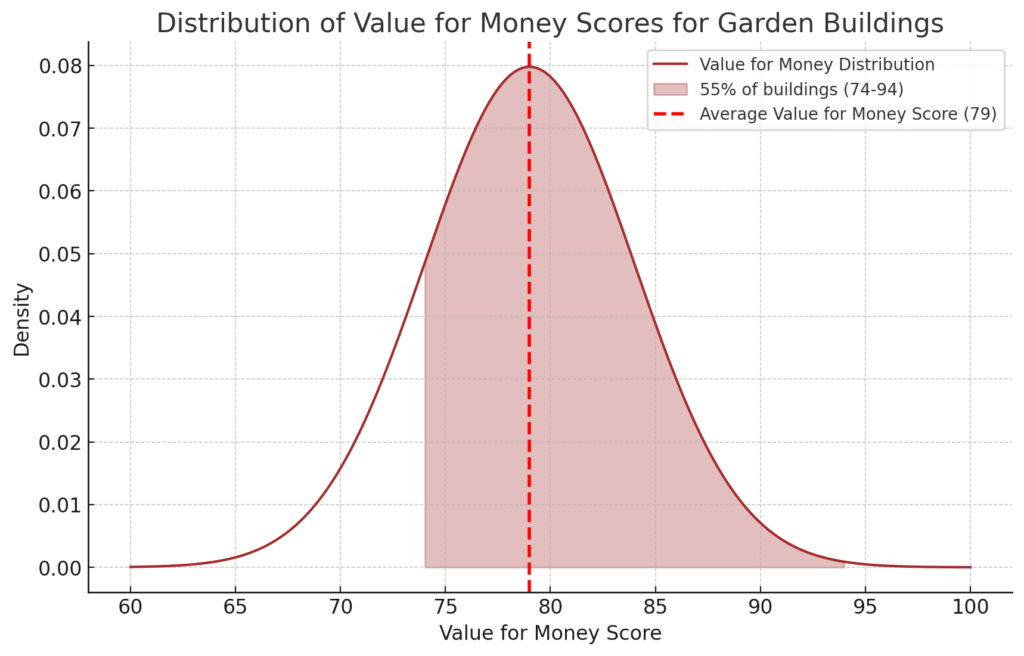
Potential flaws in the Expert Score
While we are confident that the Expert Score provides a robust, data-driven measure of a garden building’s quality, it’s important to remember that no rating system is perfect. Here are a few considerations to keep in mind:
- Robust but not infallible: Our scoring model is backed by extensive data analysis and expert insights, which makes it a strong indicator of overall quality. However, certain sub-scores can be trickier to calculate with absolute precision. For example, Ease of Construction may be hard to gauge for very small or unusual products, since fewer data points are available for those comparisons. In such cases, the system’s assessment might be a little less exact than it is for more common products.
- One size doesn’t fit all: The Expert Score is meant to be a helpful guide, but it isn’t a personalised assessment of your unique needs. A garden building with a lower score might still be the perfect choice for someone who priorities a specific feature or has a particular use in mind. In other words, a product that ranks average on our scale could align exactly with what you are looking for. We encourage you to use the Expert Score as a starting point – a quick way to compare options – and then consider your own requirements and preferences before making a final decision.
In summary, the Expert Score system is a powerful tool for evaluating garden buildings in a consistent, unbiased way. It highlights the products that experts rate highly, but it isn’t meant to dictate your personal choice. Use it as a reliable reference, all the while remembering to factor in what matters most to you. This way, you get the best of both worlds: an objective expert perspective and a decision that feels right for your individual needs.
